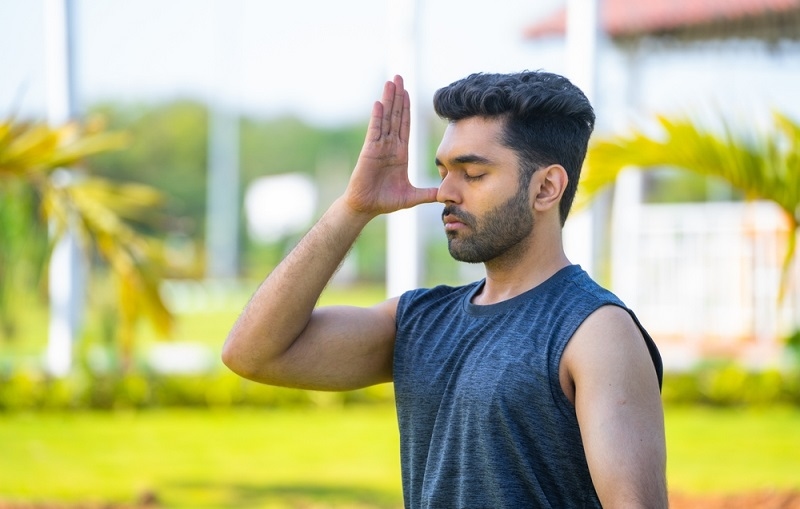
Stress doesn’t ask for permission. It shows up in your morning coffee, your meetings, and even when you’re trying to sleep. But there’s a tool you already carry with you every second: your breath. Using it the right way, daily, can switch off tension, calm your mind, and give you control over anxiety. No fancy gadgets, no expensive programs—just simple breathing exercises that work if you actually do them.
Even a few minutes a day can reset your nervous system, improve focus, and make stress feel far less overwhelming. These exercises aren’t complicated—they’re quick, practical, and something you can fit into any part of your day. The more consistent you are, the stronger your calm becomes.
Below are five techniques, how to do them, and what makes them so effective. These aren’t fluff—they’re practical, daily tools you can use anywhere.

Why It Works
The 4-7-8 breathing method is like a mini-reset for your nervous system. It slows your heart, quiets racing thoughts, and signals to your body that it’s safe to relax. It’s especially good before sleep or during a moment of panic.
How to Do 4-7-8 Breathing
Mistakes People Make
Why It Helps
Use this as part of your nightly wind-down. Your body will start associating it with “time to relax,” and stress loses its grip.
Discover More: Senior Health & Healing: Best Alternative Therapy Options
Why It Works
Most people barely use their diaphragm, breathing shallowly into their chest. Belly breathing fixes that. Your lungs fill properly, your body gets more oxygen, and your nervous system gets a signal to calm down. This is a classic breathing technique for real stress relief.
How to Do It
Tips for Success
Why It Helps
Even a few minutes mid-day can change how you handle the rest of it.
Why It Works
Box breathing is simple but powerful. The rhythm gives your brain something to focus on, so it stops spiraling. It’s why athletes, pilots, and even Navy SEALs use it under pressure.
How to Do Box Breathing
Common Pitfalls
Why It Helps
Try this before a big call, meeting, or anything that spikes tension. Even two minutes will make a difference.
Must Read: 6 Tips for Senior Fitness: Stay Active and Improve Mobility
Why It Works
This one balances your brain hemispheres while calming the body. It’s like hitting a reset button for your mind, especially mid-day when stress sneaks in unnoticed.
How to Do It
Tips
Why It Helps
This is your “mid-day rescue” tool. A few minutes can reset your energy and focus.
Why It Works
Bhramari uses humming vibrations to calm the nervous system. The sound blocks mental chatter while activating the vagus nerve for full-body relaxation.
How to Do It
Mistakes to Avoid
Why It Helps
Use this right before bed or during moments when anxiety spikes.
Consistency is key. A simple schedule could look like this:
| Time of Day | Exercise | Duration |
| Morning | Box Breathing | 3 min |
| Midday | Diaphragmatic Breathing | 5 min |
| Afternoon | Alternate Nostril Breathing | 4 min |
| Evening | 4-7-8 Breathing | 3 min |
| Bedtime | Bhramari Breathing | 5 min |
Pro Tips
Even following half of this routine will reduce stress levels significantly within a week or two.
Besides calming anxiety, these breathing exercises energize you, increase focus, and enhance mental clarity. They work on regulating your emotions, thus helping you handle stressful situations better, while also benefiting your physical health in that they lower blood pressure and ease muscle tension. Practicing these activities will reinforce your body's resilience so that even when stress hits, you're not easily thrown off balance. All in all, it's like providing a tune-up to your mind and body: quick, easy, and completely in your hands.
Can I do all five in one day?
Yes, but start with 2-3 to form a habit. Add the rest gradually.
What if I feel lightheaded?
Ease the counts and slow down. No need to force it.
Do I need a quiet space?
It helps, but most exercises can be done at your desk or even walking.
How long before I notice results?
Immediate calm is common. Consistent practice brings bigger, lasting effects in 1-2 weeks.
You may also like: 6 Surprising Benefits of Reading for Older Adults
Stress is unavoidable, but suffering isn’t. These five breathing exercises—from 4-7-8 breathing at night to diaphragmatic breathing mid-day—give you a daily toolset to take back control. Learn how to do breathing exercises correctly, stick with them, and you’ll notice a real difference.
You don’t need extra gear, apps, or supplements. Just your breath. Use it wisely, daily, and watch stress lose its power.
This content was created by AI